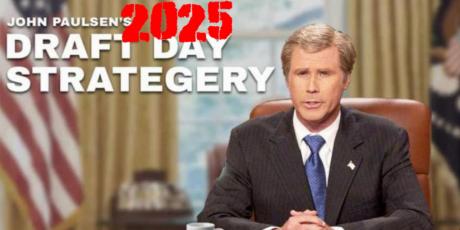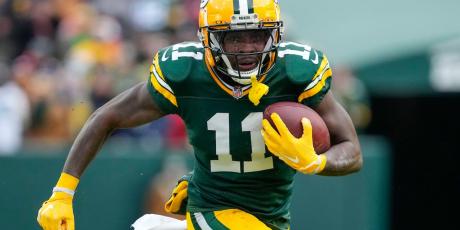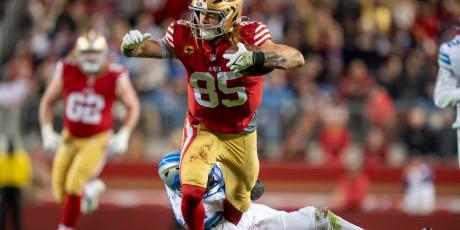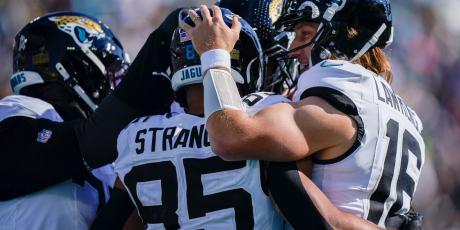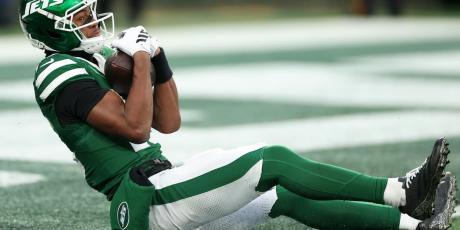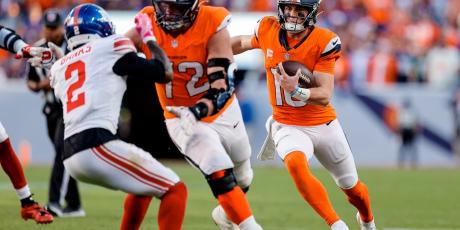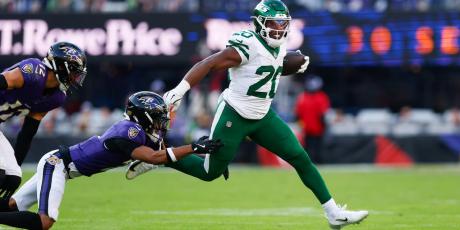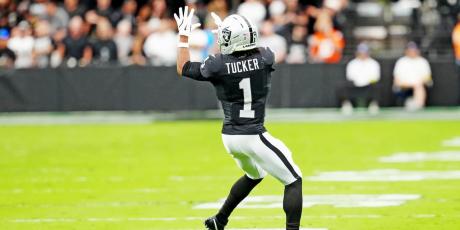Percy Harvin: A Case Study in Banking on the Unlikely

I was disappointed when Percy Harvin was declared out for the entire 2013 season after undergoing hip surgery.
That’s not because I was salivating at the thought of drafting Harvin as a centerpiece of my various fantasy squads, but because I was very much looking forward to my opponents making that mistake.
Harvin, coming off an injury-shortened 2012 campaign that saw him put up top-3 wide receiver numbers during the season’s first half, had forced the Vikings to trade him to Seattle, where he would reunite with former offensive coordinator Darrell Bevell and upstart signal caller Russell Wilson.
The fantasy reaction was as immediate as it was dramatic: mock drafters in the spring of 2013 were taking Percy among the top-7 receivers off the board. The thinking was that Harvin had been freed from the prison of Minnesota’s dysfunctional offense, and he would now be an unstoppable force in Seattle’s scheme.
That thinking was wrong.
The dual threat Harvin, who is rumored to have had rocket boosters strapped to his back during Seattle’s Super Bowl demolition of the Broncos, is now being drafted as the 14th wide receiver off the board. Fantasy owners, on average, are drafting him at 37th overall, about 30 spots ahead of where the 4for4 powers that be believe he should be taken.
I think the Harvin hype train could pick up at least a modicum of steam this summer. Harvin, after all, has said he’s as healthy as he’s been since high school, and Seahawks coaches are buzzing with excitement in anticipation of a full season with the talented, tough, shifty, speedy Percy in their starting lineup.
The argument for 4for4’s valuation of Harvin is fairly straightforward. I’ll show you how there’s only a 30 percent chance that Harvin will meet his draft day price in 2014. And most of that liklihood hinges entirely on Harvin achieving career high fantasy efficiency.
A History of (Not) Passing the Pigskin
Bevell, who headed the Minnesota offense for five seasons before taking over the then-moribund Seahawks’ offense in 2011, has hardly ever been an advocate of the aerial attack.
With the exception of a 2009 season that saw the Brett Favre-led Vikings scorch teams through the air, Bevell’s offenses have neither thrown the ball very much, nor proven incredibly efficient with those tosses.
Bevell hasn’t exactly been coy when asked how the Seattle offense is supposed to function in an ideal world.
“We want to be a run-first team,” he said in a 2013 interview with MyNorthwest.com, adding that the team had added a stable of physical running backs – including Christine Michael and Robert Turbin – in an effort to maintain a tough-nosed offense when Marshawn Lynch needs a breather.
Below is a comprehensive history of how Bevell’s play calling looks in contrast with the NFL’s increasingly pass-heavy approach. The “pass attempt rank” column shows where each Bevell offense finished in passes among all NFL teams. The “pass yardage rank” column shows where each offense ranked in total aerial yardage.
Seattle OC Darrell Bevell's Playcalling
|
Year/Team |
Pass Attempt Rank |
Pass Yardage Rank |
|
2006 Vikings |
9 |
18 |
|
2007 Vikings |
32 |
28 |
|
2008 Vikings |
28 |
25 |
|
2009 Vikings |
10 |
8 |
|
2010 Vikings |
26 |
28 |
|
2011 Seahawks |
25 |
22 |
|
2012 Seahawks |
32 |
27 |
|
2013 Seahawks |
31 |
26 |
The lone exception, beyond the 2009 Favre season, was the Vikings’ 2006 campaign that saw Brad Johnson air it out in an offense devoid of a reliable runner. Yes, there was a time before Adrian Peterson.
Take a look at the Seahawks’ pass attempts during Wilson’s time as starter. It’s safe to say no team eschewed the pass more than Seattle over the past two seasons, with the team averaging a meager 412.5 pass attempts over that span.
Twenty-one quarterbacks attempted more passes than Wilson in 2013, Mike Glennon, who only played in 13 contests, eclipsed Wilson’s attempt total.
More importantly for the purposes of evaluating Harvin’s 2014 fantasy value, let’s take a look at who got the biggest slice of Seattle’s tiny passing pie in 2012 and 2013.
Sidney Rice led all Seahawks pass catchers with 75 targets in 2012, accounting for 18.5 percent of Wilson’s tosses. Golden Tate saw 93 targets during the 2013 season, leading all Seattle receivers with a 22 percent share of the team’s pass attempts.
And therein lies the problem for anyone and everyone drafting Harvin at his current draft day price of WR14. Bevell’s offensive scheme would have to emphasize a single receiver (Harvin) much more than any wideout during his time running the team’s offense. I think we're being generous if we peg Percy with 25 percent of Seattle's 2014 targets.
Bevell and head coach Pete Carroll have said no such thing in the lead-up to the 2014 season. Perhaps they eventually will spout off about force-feeding the rock to Percy at every opportunity, like the Vikings did during the first eight games of 2012.
That would, of course, go against everything Bevell has ever done in Seattle.
Banking on the Unlikely
The foundation of good process in fantasy football – or anything, really – is to figure out what is the most likely scenario and make decisions accordingly.
That’s especially important when we’re discussing fairly early-round draft picks. We can swing for the proverbial fences all day every day when it comes to late-round fliers, but understanding likely outcomes is of paramount importance in the top half of a fantasy draft.
Harvin had a career high 1.2 standard fantasy points per attempt (targets plus rush attempts) in 2009, his rookie season. He has a career average of 1.0 points per attempt, not bad for a guy who doesn’t catch downfield passes. On the downside, Harvin posted a career low 0.9 FP/Attempt in 2012 and in 2013 only touched the ball once.
Below is chart showing how Harvin would produce in myriad scenarios. The Y-Axis shows FP/Attempt, ranging from Harvin's career low (0.9) to his career high (1.2). On the X-Axis are a range of attempts. Ignoring Harvin's 1 touch 2013 season, 100 would be a new career low (106, 2009) and 180 would be a new career high (175, 2011). Each cell shows the fantasy points Harvin would score in the given scenario and where that would have placed him in the final 2013 WR standings.
Percy Harvin - Range of Possible 2014 Outcomes
| Harvin FP/Attempt | 100 Attempts | 120 Attempts | 140 Attempts | 160 Attempts | 180 Attempts |
|---|---|---|---|---|---|
| 0.9 | 90 (WR50) | 108 (WR37) | 126 (WR25) | 144 (WR18) | 162 (WR15) |
| 1 | 100 (WR40) | 120 (WR31) | 140 (WR19) | 160 (WR16) | 180 (WR11) |
| 1.1 | 110 (WR36) | 132 (WR25) | 154 (WR16) | 176 (WR12) | 198 (WR7) |
| 1.2 | 120 (WR31) | 144 (WR18) | 168 (WR13) | 192 (WR10) | 216 (WR4) |
Note: Harvin's career FP/Rush is 0.9 while his career FP/Target is higher at 1.1. We've lumped them together here for simplicity sake, but fantasy-wise we'd actually perfer targets to rush attempts.
Harvin, as you can see, has precisely six scenarios above in which he’ll meet or exceed his average draft position of WR14. He would need to a career high in FP/Attempt or Attempts, or be close to career levels in both. Assuming a symmetrical distribution of the probabilities above (we can't really assume this, but what the heck), Harvin has about a 30 percent chance of being worthy of his current WR14 ADP. If he rises in drafts this summer, the likelihood of Percy being worth his price will drop significantly.
That 30 percent likelihood seems like a decent enough chance until we remember that most of Harvin's top-flight numbers come in that bottom row. It almost goes without saying that Harvin would prove to be a reliably elite fantasy wide receiver if he achieved his career-high per-attempt efficiency mark.
As for targets, posting a career high here seems unlikely given the tendencies OC Darrell Bevell outlined above.
That, dear reader, is why Harvin in 2014 is a case study in banking on the unlikely at his ADP.
It's pretty clear, however, that Harvin can finish as a top-25 receiver if he can manage a 16-game season (or something close to it). He wouldn't sink your fantasy squad in 14 of the 20 above scenarios.
Bottom Line
There are very few justifiable reasons to draft Harvin at his current ADP. I haven’t even thrown injury risk into the fray, since it’s tough to quantify, and many fantasy owners apply injury risk selectively depending on their love or hate of a given player. For what it's worth, 4for4 gives Harvin a health grade of D. He has averaged 11 games played over his five year career.
I’d much rather have Andre Johnson at his ADP of WR19, Michael Floyd at WR23, Eric Decker at WR31 or Roddy White at WR25. Bank on the likely -- let someone else invest in Percy Harvin.
Note: This article does not account for kick/punt return stats. If your league awards for return yardage, Harvin's value will likely go up, as will his ADP.

